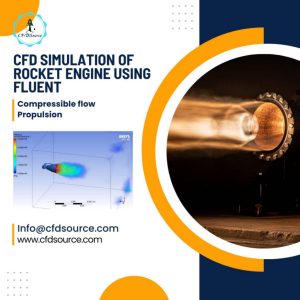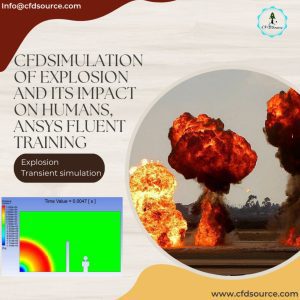That dreaded “Divergence detected…” error message in Ansys Fluent. It’s a moment that can stop a project dead in its tracks and send your stress levels through the roof. We get it. It’s a common hurdle in many [CFD Engineering Services] projects, but it’s almost always solvable. Instead of just throwing random settings at the wall to see what sticks, this guide is our battle-tested approach to systematically Solving Common Convergence Issues in Ansys CFD Simulations, built from years of wrestling with complex industrial models.
First, Let’s Understand: What Does “Convergence” Really Mean in Your Ansys Simulation?
Look, it’s easy to get fixated on the residuals plot, watching those lines drop towards 1e-6 and calling it a day. But that’s only half the story. True convergence is a two-part harmony: Numerical Convergence and Physical Convergence.
Numerical convergence means the math is happy; the iterative errors from one calculation to the next are acceptably small. Physical convergence, which is far more important, means the actual physical quantities you care about—like drag, pressure drop, or maximum temperature—have stopped changing and settled on a steady value. You can have one without the other, and that’s a trap.
Distinguishing Between Residuals Plot and Monitoring Key Physical Quantities
Your residuals can be flat as a pancake 🥞, but if the lift coefficient on your airfoil is still oscillating wildly, your solution is useless. Before you even hit “Calculate,” you need to set up monitor plots for the key results of your simulation.
Are you simulating a heat exchanger? Monitor the outlet temperature and the overall heat transfer coefficient. Analyzing a valve? Keep an eye on the mass flow rate and the pressure drop across it. When those plots flatten out, you can start to trust your solution. Relying only on residuals is one of the fastest ways to get a beautifully converged, yet completely wrong, answer.
A Systematic Troubleshooting Checklist: The CFDSource Diagnostic Method
Over the past 15 years, I’ve seen that most convergence problems stem from just a few core areas. Instead of randomly tweaking settings and praying, let’s be engineers about this. We use a simple, three-step diagnostic process that starts with the most likely culprit and works its way down. It saves time, prevents headaches, and, most importantly, it works.
Let’s walk through it.
Step 1: Your First Suspect is Always the Mesh – The GIGO Principle in CFD
I cannot count the number of times a panicked client brought us a “solver problem” that was actually a mesh problem in disguise. It’s the foundation of your entire simulation. Garbage In, Garbage Out (GIGO) is the law of the land in CFD. A poor-quality mesh will fight you every step of the way, no matter how perfect your solver settings are. Before you touch anything else, check your mesh quality.
- Check Skewness & Orthogonal Quality: In Ansys Meshing, aim for a maximum skewness below 0.85-0.9. Anything higher is asking for trouble, especially in complex regions. High skewness creates cells that are just numerically unstable.
- Verify Y+ and Inflation Layers: For turbulence models that resolve the boundary layer, getting the Y+ value right isn’t a suggestion; its a requirement. If its off, your wall shear stress and heat transfer results will be meaningless. Mastering this often requires [some advanced meshing techniques].
Step 2: Are Your Physics and Boundary Conditions Realistic?
This is a sanity check. Step back from the screen and think about the actual physics. Did you accidentally set an inlet velocity that’s supersonic for an incompressible flow? Is your heat source value physically possible, or did you add an extra zero?
A common mistake we see is improperly defined outlets. If you set a pressure outlet where flow might recirculate and re-enter, the solver will struggle and likely diverge. A “pressure-outlet” boundary condition assumes flow is only going out. If that’s not true for your physics, the setup is wrong from the start.
Step 3: Fine-Tuning the Ansys Solver Settings – The Control Room
Only after you’ve cleared your mesh and physics should you step into the solver’s control room. This is where you can gently guide a reluctant solution toward convergence. But be careful—aggressive changes here can mask underlying problems.
The art of Under-Relaxation Factors (URFs) is a prime example. Dropping URFs is a crutch, not a long-term solution, but sometimes you need that crutch to get past a tricky startup phase. A good strategy is to start the simulation with default URFs. If it struggles, you can lower them slightly (e.g., pressure from 0.3 to 0.2, momentum from 0.7 to 0.5) to stabilize the initial iterations, and then ramp them back up. The choice of scheme is also critical; it’s part of the trade-off between stability and accuracy, similar to the bigger decision of using [Ansys Fluent or CFX for your project].
Advanced Convergence Tactics for Stubborn Ansys Simulations
So, you’ve checked your mesh, your physics are solid, and you’ve gently nudged the URFs, but the solution still fights you. Now it’s time to bring out the bigger guns. These are techniques we use at CFDSource when a simulation is particularly stubborn, often due to highly non-linear physics or a poor initial guess.
The Power of the Pseudo-Transient Method for Difficult Steady-State Problems
Think of this as adding training wheels to your steady-state simulation. The pseudo-transient method, available in Ansys Fluent, essentially solves the steady-state problem using a time-marching approach with a “fake” timescale. It’s incredibly robust for getting past a rough initialization or dealing with physics that are inherently unstable at the start.
It’s a fantastic tool for tough cases. But be aware, for some very complex coupled problems, especially involving electromagnetics or structural mechanics, you might need to evaluate [when a tool like Comsol might be a better fit] for its multiphysics capabilities.
Switching Solvers: When to Use the Coupled Solver Over SIMPLE for High-Speed or Strongly Coupled Flows
The SIMPLE algorithm is the default, reliable workhorse for a huge range of applications. It solves the momentum and pressure equations separately. However, for some problems, this segregated approach struggles.
If you’re dealing with high-speed compressible flow, high-Rayleigh number natural convection, or any problem where the pressure and velocity fields are very tightly linked, the Coupled solver is often a better choice. It solves the equations simultaneously, leading to much more robust and faster convergence for these specific cases. It uses more memory per iteration, but if it gets you a converged solution in fewer iterations, it’s a net win. 🚀
A Practical Case Study from CFDSource: Stabilizing a Failing Heat Exchanger Simulation
We once had a project involving a compact shell-and-tube heat exchanger with low-profile fins. The simulation kept diverging, no matter what we tried with the solver settings. The residuals for energy would just shoot to the moon. The issue was the mesh. The high aspect ratio of the fins was creating a few terrible, highly skewed cells right at the fin root.
Instead of trying to force a single, conforming mesh to work, we split the geometry. We created a high-quality hex mesh for the main pipe domains and a separate, fine-tuned mesh for the complex finned tube. We then connected them using a non-conformal mesh interface in Fluent. The solver handles the interpolation between the two. The result? The simulation converged beautifully in a third of the time, and the heat transfer results matched the client’s experimental data within 2%.
Beyond Convergence: Is Your “Converged” Solution Physically Correct?
This is the question that separates an analyst from an engineer. A converged solution is not automatically a correct one. I’ve seen simulations converge to a physically impossible state simply because the setup allowed it. You absolutely must interrogate your results.
Do the flow patterns make sense? Are the temperature and pressure values within a realistic range? If you see something that looks weird, don’t just accept it. Zoom in. Plot vectors. Create streamlines. Be skeptical. Your engineering intuition is your most valuable tool here.
Quick Guide to Performing a Grid Independence Study to Trust Your Results
For any work that matters—be it for a publication or a critical design decision—you must perform a grid independance study. It’s non-negotiable. The process is simple but vital:
- Run your simulation on your initial mesh and record the key result (e.g., lift force).
- Refine the mesh significantly (e.g., halve the global cell size).
- Re-run the exact same simulation.
- Compare the key result. If the change is very small (say, <2%), your solution is likely independent of the mesh. If it changes by 10%, your first mesh wasn’t good enough, and you may need to refine it again.
Final Checklist: Your 5-Point Plan Before Running Any Ansys Simulation
Before you hit “Calculate,” run through this mental checklist. It’ll save you hours.
- [ ] Mesh Quality: Is my max skewness < 0.9? Is my orthogonal quality good?
- [ ] Y+ Value: Is my Y+ appropriate for my chosen turbulence model?
- [ ] Boundary Conditions: Are they physically realistic and correctly placed?
- [ ] Monitor Points: Have I set up monitors for my key physical results (not just residuals)?
- [ ] Sanity Check: Does the initial solution after initialization look reasonable?
When Your Project Demands Certainty: Partner with an Expert
Sometimes, a project is too critical, the physics too complex, or the deadline too tight to go it alone. While you can find individuals for hire, knowing [what to look for when hiring Ansys help] is key. For mission-critical industrial applications, partnering with an established team brings a level of rigor, validation, and collective experience that’s hard to match. It’s less about just running a simulation and more about providing a certified, defensible engineering result.
Ultimately, mastering the art of solving convergence problems in CFD is a journey of experience, and we hope this guide gets you there faster.


